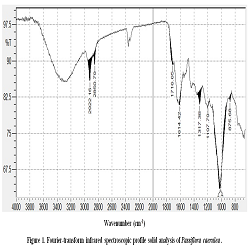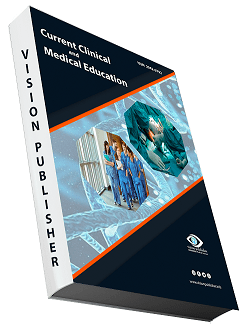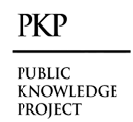Biometric Metabolic Identification Using Fourier-Transform Infrared Spectroscopy
Keywords:
Fourier-Transform infrared (FTIR),, spectroscopy, high-throughput screeningAbstract
The rate of new antibiotic discoveries has recently slowed to a crawl. Antibiotic discovery has shifted back to phenotypic screening, but identifying mechanisms of action (MOA) remains a big challenge. Consequently, there is an urgent need for metabolic fingerprinting techniques like Fourier-Transform Infrared (FTIR) spectroscopy that can both deduce MOAs and screen complete cells at high throughput. To uncover the metabolic fingerprint caused by fifteen antibiotics on the metabolism of Escherichia coli, a bioassay based on high-throughput whole-cell FTIR spectroscopy was created. Spectra were swiftly obtained in the high-throughput mode after cells were exposed for a short period of time to a concentration four times greater than the minimum inhibitory concentration. Partially least squares discriminant and principal component analyses followed optimization of the preprocessing steps. Using either analysis algorithm, the biochemical fingerprints acquired using FTIR spectroscopy were highly specific enough to distinguish between several antibiotics across three separate cultures. These fingerprints aligned with the known modes of action (MOA) of all the antibiotics that were studied. This includes instances of antibiotics that target cell wall production, DNA, RNA, and proteins.
Downloads
References
C.Y. Kao et al. Helicobacter pylori infection: an overview of bacterial virulence factors and pathogenesis Biom. J. (2016)
J.L. Snider et al. The beta 1 integrin activates JNK independent of CagA, and JNK activation is required for Helicobacter pylori CagA1 induced motility of gastric cancer cells J. Biol. Chem. (2008)
R.M. Ferreira et al. Clinical relevance of Helicobacter pylori VacA and CagA genotypes in gastric carcinoma Best Pract. Res. Clin. Gastroenterol. (2014
M.G. Chambers et al. Structural analysis of the oligomeric states of Helicobacter pylori VacA toxin J. Mol. Biol. (2013)
P. Boquet et al. Intoxication strategy of Helicobacter pylori VacA toxin Trends Microbiol. (2012)
D.E. Kirschner et al. The dynamics of Helicobacter pylori infection of the human stomach J. Theor. Biol. (1995)
N.A. Baldauf et al. Effect of selective growth media on the differentiation of Salmonella enterica serovars by Fourier-transform mid-infrared spectroscopy J. Microbiol. Methods (2007)
R. Davis et al. Evaluation of Fourier transform infrared (FT-IR) spectroscopy and chemometrics as a rapid approach for sub-typing Escherichia coli O157:H7 isolates Food Microbiol. (2012)
A. Hammiche et al. Monitoring cell cycle distributions in MCF-7 cells using near-field photothermal microspectroscopy Biophys. J. (2005)
V. Erukhimovitch et al. FTIR microscopy as a method for identification of bacterial and fungal infections J. Pharmaceut. Biomed. Anal. (2005)
H.P. Wang et al. Microscopic FTIR studies of lung cancer cells in pleural fluid Sci. Total. Environ. (1997)
B. Rigas et al. Infrared spectroscopic study of cervical smears in patients with HIV: implications for cervical carcinogenesis J. Lab. Clin. Med. (2000)
A. Russo et al. Propolis protects human spermatozoa from DNA damage caused by benzo[a]pyrene and exogenous reactive oxygen species Life Sci. (2006)
Y.S. Song et al. Estrogenic effects of ethanol and ether extracts of propolis J. Ethnopharmacol. (2002)
A. Russo et al. Antioxidant activity of propolis: role of caffeic acid phenethyl ester and galangin. Fitoterapia (2002)
Y. Onlen et al. Comparative trial of different anti-bacterial combinations with propolis and ciprofloxacin on Pseudomonas keratitis in rabbits Microbiol. Res. (2007)
L.P. Broudiscou et al. Estimation of the growth rate of mixed ruminal bacteria from short-term DNA radiolabeling. Anaerobe (1998)
C. Yang et al. Caffeic acid phenethyl ester (CAPE) prevents transformation of human cells by arsenite (As) and suppresses growth of As-transformed cells Toxicology. (2005)
Hutter, B.; Schaab, C.; Albrecht, S.; Borgmann, M.; Brunner, N.A.; Freiberg, C.; Ziegelbauer, K.; Rock, C.O.; Ivanov, I.; Loferer, H. Prediction of mechanisms of action of antibacterial compounds by gene expression profiling. Antimicrob. Agents Chemother. 2004, 48, 2838–2844. [CrossRef] [PubMed]
Halouska, S.; Chacon, O.; Fenton, R.J.; Zinniel, D.K.; Raul, G.; Powers, R. Use of NMR Metabolomics to Analyze the Targets of D-cycloserine in Mycobacteria: Role of D-Alanine Racemase. J. Proteome Res. 2007, 6, 4608–4614. [CrossRef] [PubMed]
Kohanski, M.A.; Dwyer, D.J.; Collins, J.J. How antibiotics kill bacteria: From targets to networks. Nat. Rev. Microbiol. 2010, 8, 423–435. [CrossRef]
Zampieri, M. From the metabolic profiling of drug response to drug mode of action. Curr. Opin. Syst. Biol. 2018, 10, 26–33. [CrossRef]
Schelli, K.; Zhong, F.; Zhu, J. Comparative metabolomics revealing Staphylococcus aureus metabolic response to different antibiotics. Microb. Biotechnol. 2017, 10, 1764–1774.
Campos, A.I.; Zampieri, M. Metabolomics-Driven Exploration of the Chemical Drug Space to Predict Combination Antimicrobial Therapies. Mol. Cell 2019, 74, 1291–1303
Wu, C.; Choi, Y.H.; van Wezel, G.P. Metabolic profiling as a tool for prioritizing antimicrobial compounds. J. Ind. Microbiol. Biotechnol. 2016, 43, 299–312.
Hoerr, V.; Duggan, G.E.; Zbytnuik, L.; Poon, K.K.H.; Große, C.; Neugebauer, U.; Methling, K.; Löffler, B.; Vogel, H.J. Characterization and prediction of the mechanism of action of antibiotics through NMR metabolomics. BMC Microbiol. 2016, 16, 1–14.
Chaleckis, R.; Meister, I.; Zhang, P.; Wheelock, C.E. Challenges, progress and promises of metabolite annotation for LC–MS-based metabolomics. Curr. Opin. Biotechnol. 2019, 55, 44–50.
Vincent, I.M.; Ehmann, D.E.; Mills, S.D.; Perros, M.; Barrett, M.P. Untargeted Metabolomics to Ascertain Antibiotic Modes of Action. Antimicrob. Agents Chemother. 2016, 60, 2281–2291.
Zampieri, M.; Sekar, K.; Zamboni, N.; Sauer, U. Frontiers of high-throughput metabolomics. Curr. Opin. Chem. Biol. 2017, 36, 15–23.
Zampieri, M.; Szappanos, B.; Buchieri, M.V.; Trauner, A.; Piazza, I.; Picotti, P.; Gagneux, S.; Borrell, S.; Gicquel, B.; Lelievre, J.; et al. High-throughput metabolomic analysis predicts mode of action of uncharacterized antimicrobial compounds. Sci. Transl. Med. 2018, 10, 1–12.
Marques, V.; Cunha, B.; Couto, A.; Sampaio, P.; Fonseca, L.P.; Aleixo, S.; Calado, C.R.C. Characterization of gastric cells infection by diverse Helicobacter pylori strains through Fourier-transform infrared spectroscopy. Spectrochim. Acta Part A Mol. Biomol. Spectrosc. 2019, 210, 193–202. [CrossRef]
Goodacre, R.; Vaidyanathan, S.; Dunn, W.B.; Harrigan, G.G.; Kell, D.B. Metabolomics by numbers: Acquiring and understanding global metabolite data. Trends Biotechnol. 2004, 22, 245–252.
Ribeiro da Cunha, B.; Fonseca, L.P.; Calado, C.R.C. A phenotypic screening bioassay for Escherichia coli stress and antibiotic responses based on Fourier-transform infrared (FTIR) spectroscopy and multivariate analysis. J. Appl. Microbiol. 2019, 127, 1776–1789.
Sharaha, U.; Rodriguez-Diaz, E.; Riesenberg, K.; Bigio, I.J.; Huleihel, M.; Salman, A. Using Infrared spectroscopy and Multivariate Analysis to Detect Antibiotics’ Resistant Escherichia coli Bacteria. Anal. Chem. 2017, 89, 8782–8790.

Downloads
Published
How to Cite
Issue
Section
License
Copyright (c) 2024 Bint Al-Huda Dhaher Jabor

This work is licensed under a Creative Commons Attribution 4.0 International License.
Current Clinical and Medical Education













